The Royal West African Frontier Force was a multi-battalion field force, which was formed by the British Colonial Office in 1900 to help garrison the West African colonies of Nigeria, Gold Coast, Sierra Leone and Gambia. It was originally designated the “West African Frontier Force,” and in 1928 received the royal patronage – becoming the Royal West African Frontier Force (RWAFF).
On formation it comprised the Gold Coast Regiment, Northern Nigeria Regiment, Southern Nigeria Regiment, the Sierra Leone Battalion and the Gambia Company. The parade uniform of the RWAFF was a distinctive one and consisted of khaki drill shorts with red fezzes, along with scarlet “zouave” style jackets edged in yellow and red cummerbunds. Artillery units wore a blue jacket with yellow braid, while engineers wore red jackets with blue braid. British officers originally wore sun helmets, and later a bush or slouch hat.
By World War II almost all troopers in the RWAFF in the field wore the bush hat, but the fez remained part of the parade dress. The badge on the fez and slouch hats was a palm tree with the letters RWAFF in a scroll at the base.
The unit saw action in Africa during the First World War, and in 1939 the RWAFF was transferred from the Colonial Office to the War Office. During the Second World War units of the RWAFF saw action in Italian Somaliland, Abyssinia and Burma. It reverted to Colonial Office control in 1947.
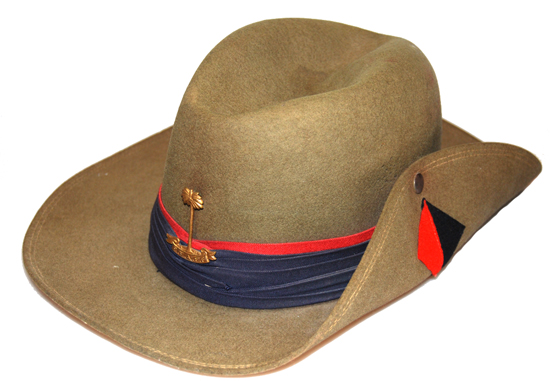
An officer’s slouch hat to the RWAFF: Gold Coast Regiment, Battery Mountain Artillery (Collection of the Author)
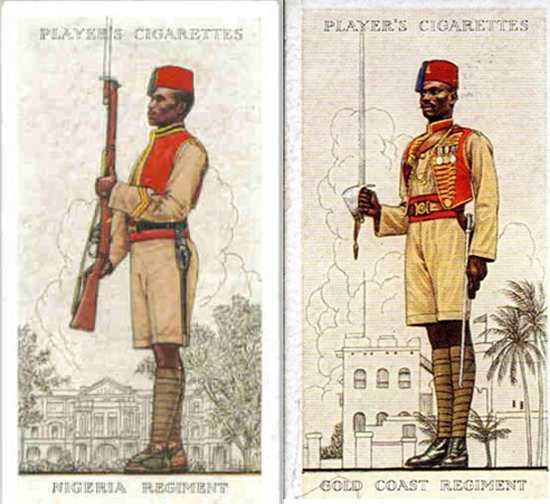
A set of 1939 dated tobacco cards from Players Cigarettes. These show the distinctive uniforms of the Nigeria Regiment and Gold Coast Regiment of the RWAFF.
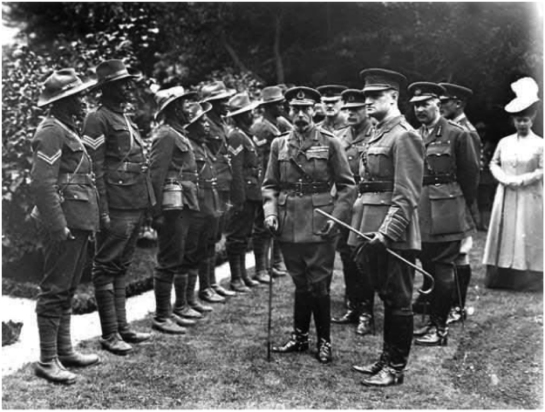
Soldiers of the RWAFF on Parade for Visit by King George V and Queen Mary in 1928 after the unit received its royal patronage.
In 1957 the British colony of The Gold Coast became the independent state of Ghana, and the Gold Coast Regiment was withdrawn from the RWAFF – becoming the Ghana Regiment of Infantry. The RWAFF was finally disbanded in 1960 as the British colonies of Nigeria, Sierra Leone and The Gambia moved towards independence. The former RWAFF units formed the basis of the new national armies of their respective states.
Peter Suciu
October 2014

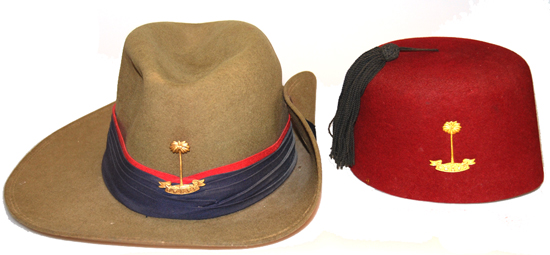
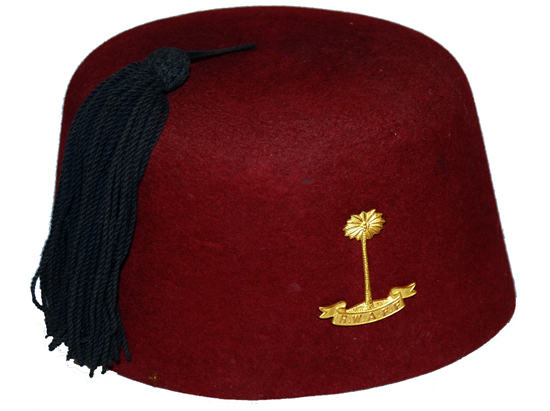
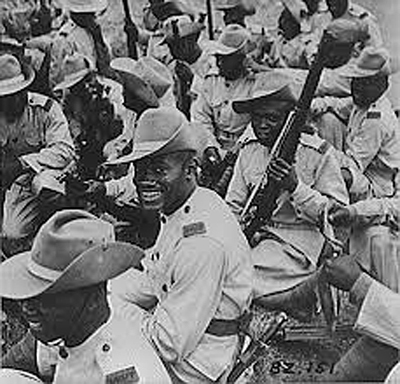
According to the British Official History of the First World War, the first shot fired in the War by a British soldier was fired by Corporal Alhaji Grunshi of the RWAFF during the invasion of the German colony of Togo. Grunshi survived the War and his photo (as Sergeant Major of the RWAFF) is in the West Africa volume of the Official History -http://en.wikipedia.org/wiki/Alhaji_Grunshi
Excellent information. Thank you very much Dan.
Hi I am trying to find some information on my grandfather a Ghanaian who fought in Burma with the Royal African Frontier Force for Britain. Can anyone help me please? I am contacting Ghana Military Records but wondered if there is record of the regiment her in Britain.
Many thanks